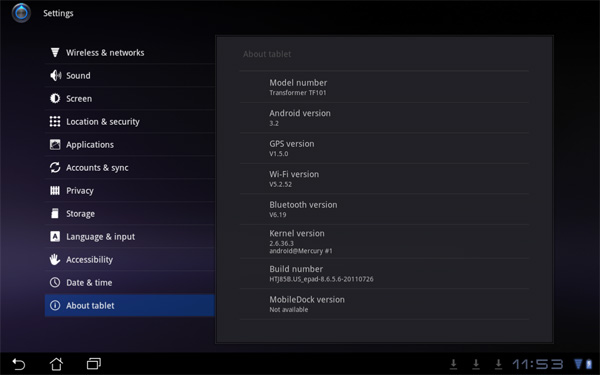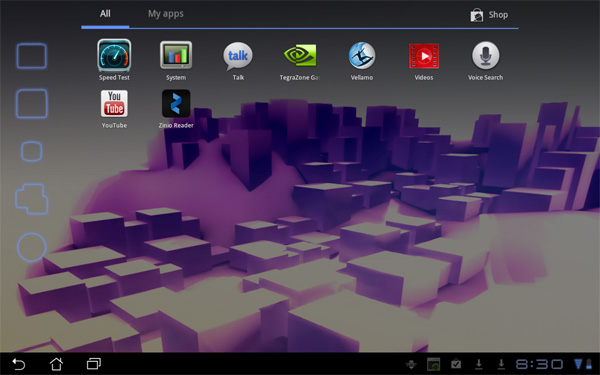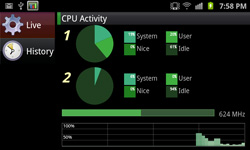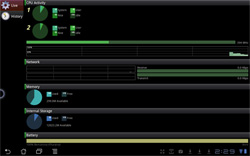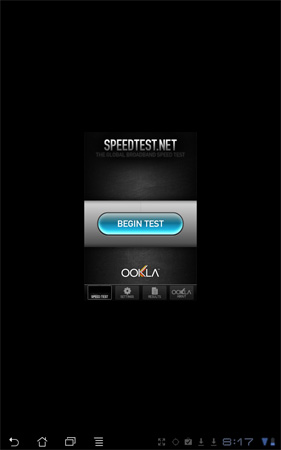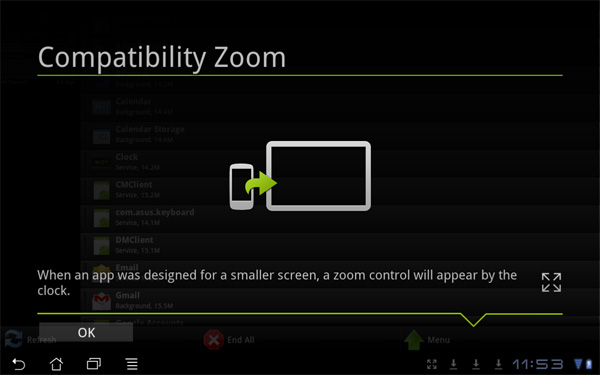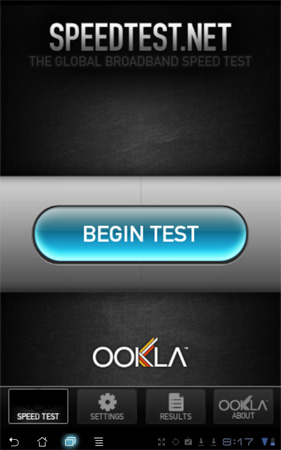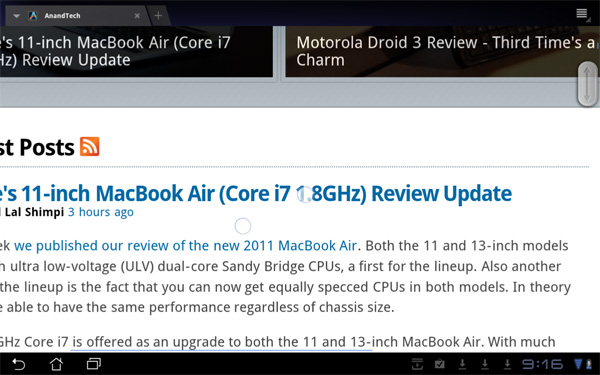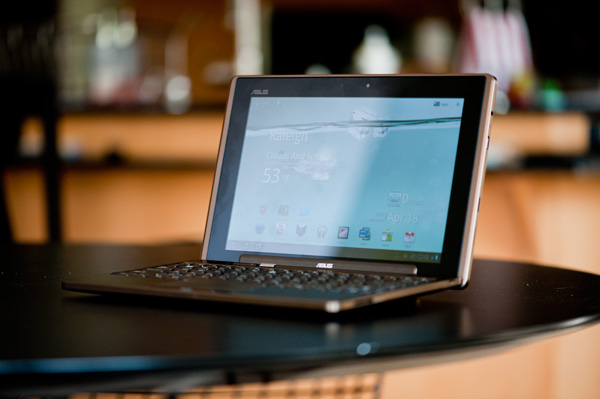
Original Link: https://www.anandtech.com/show/4558/android-32-on-the-asus-eee-pad-transformer-tested
Android 3.2 on the ASUS Eee Pad Transformer: Tested
by Anand Lal Shimpi on August 3, 2011 2:43 AM ESTBack in June, Google announced that Android 3.2 would be arriving beginning this summer for Honeycomb tablets. Motorola, being Google's launch partner for Honeycomb, was first to get the update. Next on the list was ASUS and as of late last week, Eee Pad owners in the US started getting their version of Android 3.2. I updated my Eee Pad over the weekend and the process went seamlessly. As long as you've got more than 25% left on your battery you're good to go. If you haven't updated your Eee Pad since the launch you'll need two updates to get to 3.2.
The 3.2 update on the Eee Pad brings about a new splashscreen as well as a TegraZone app. TegraZone is NVIDIA's custom marketplace that leverages the Android Market. TegraZone is used exclusively for games that are optimized for NVIDIA's Tegra 2 SoC.
The update itself is relatively minor from a feature standpoint. The version notes help explain the changes:
- Optimizations for a wider range of tablets
Android 3.2 includes a variety of optimizations across the system to ensure a great user experience on a wider range of tablet devices.
- Compatibility zoom for fixed-sized apps
Android 3.2 introduces a new compatibility zoom mode that gives users a new way to view fixed-sized apps on larger devices. The new mode provides a pixel-scaled alternative to the standard UI stretching for apps that are not designed to run on larger screen sizes, such as on tablets. The new mode is accessible to users from a menu icon in the system bar, for apps that need compatibility support.
- Media sync from SD card
On devices that support an SD card, users can now load media files directly from the SD card to apps that use them. A system facility makes the files accessible to apps from the system media store.
The first point is rather vague but the big news is of course the second point on the list. Modern Android smartphones run at one of three native resolutions: 800 x 480, 854 x 480 or 960 x 540. Honeycomb tablets on the other hand all run at 1280 x 800. What happens when you run an app optimized for the display resolution of an Android smartphone on a Honeycomb tablet? Many apps just expand to fit the screen. If they were optimized for one of the aforementioned resolutions, they just stretch by adding more horizontal/vertical resolution until they occupy the entire viewport. Here's an example using the SystemPanel app, an AnandTech favorite:
To the left we have SystemPanel running at 800 x 480 on an Android smartphone, and to the right we have it running at 1280 x 800 on the Eee Pad Transformer. The UI just scales up. Now take a look at the Speedtest app:
It doesn't scale up, it's hard coded to an 800 x 480 resolution and appears as such in the center of our Eee Pad. Android 3.2 addresses this very problem with its compatibility zoom feature:
Here's the same Speedtest app but with the zoom control set to...zoom:
If you click to enlarge the image above you'll see it's not particularly pretty (interpolated scaling rarely is) but it does completely fill the screen.
Performance
Like the Android 3.1 upgrade, all performance increases due to 3.2 appear to be limited to the GPU. My guess is NVIDIA updated its drivers with the 3.2 drop, resulting in some pretty tremendous gains in GLBenchmark 2.0:
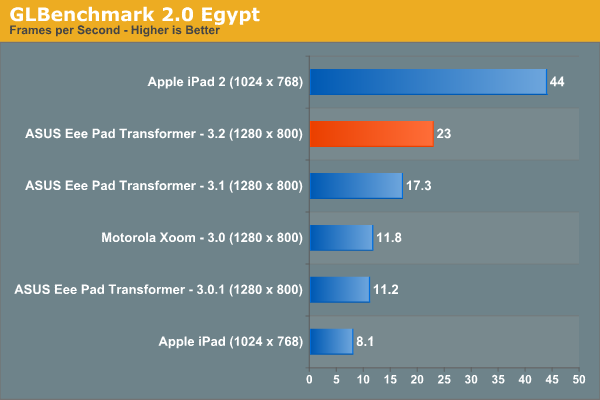
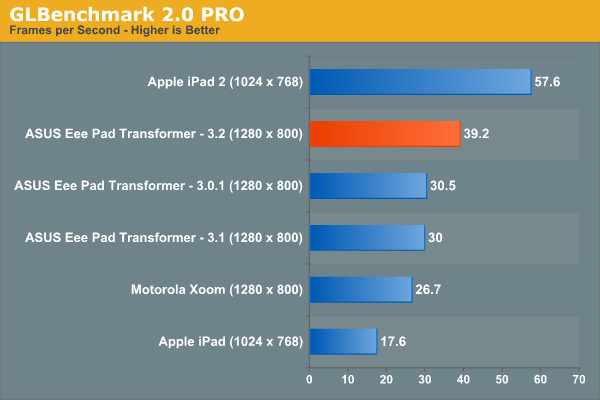
GLBenchmark 2.0 saw a 30% gain in performance thanks to the update. The gains aren't that high across the board however, a look at BaseMark ES2.0 paints a different picture:
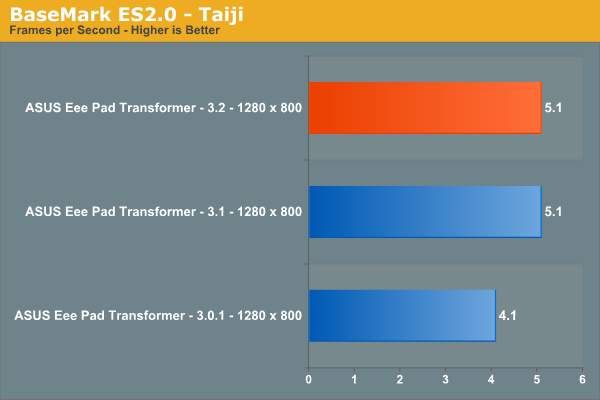
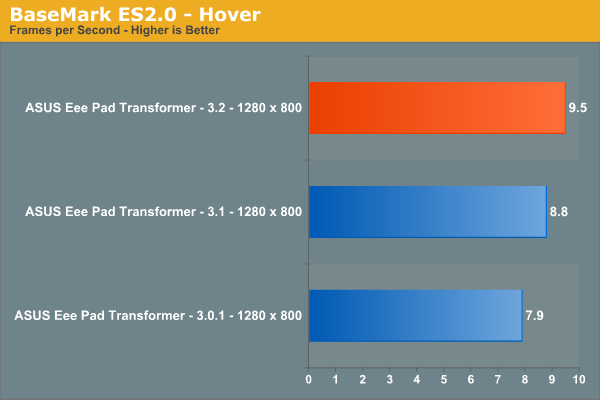
Here we see a 0 - 8% increase in performance. Whatever tweaks happened in Android 3.2 are likely only limited to specific 3D apps/games. I didn't notice any improvement in UI frame rate and the infamous apps launcher animation remains an issue.
Web browsing performance on the other hand hasn't been improved:
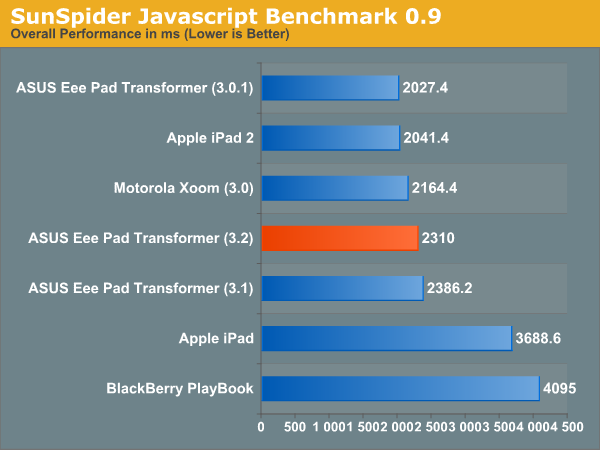
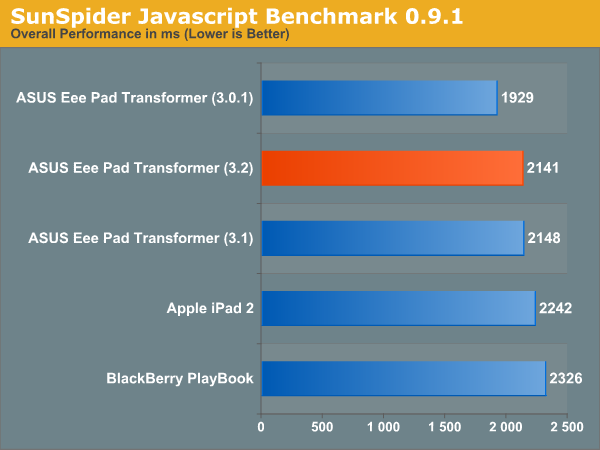
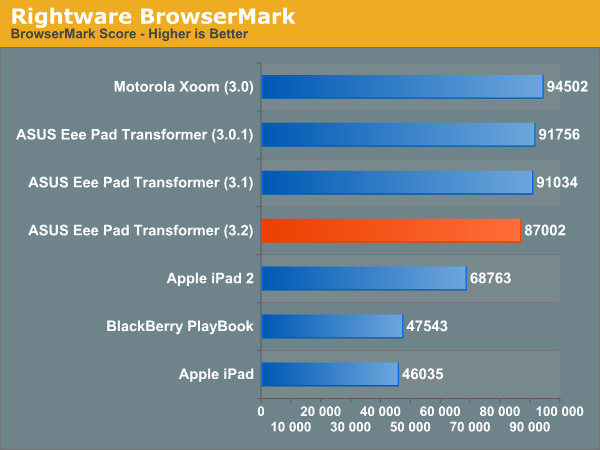
New Multitouch Gestures
When used with the Eee Pad Dock you used to get a blue mouse cursor that you could use in place of your finger, controlled by the Dock's trackpad. With the 3.2 update the cursor is gone and replaced with a larger circle. Alongside the pointer change is support for pinch/stretch to zoom in the browser.
 |
The other big change here is you can now treat the trackpad like the multitouch display. Nearly all gestures you'd perform on the display now work on the trackpad. The big addition here is pinch to zoom support via the trackpad. In the screenshot above I'm zooming in on the AnandTech homepage using the trackpad alone. The experience is unfortunately not as smooth as it is on the touchscreen with most gestures resulting in a fairly choppy response from the UI. Two finger swipe between home screens and double tap to zoom are of course supported. You can also tap and hold on the trackpad then flick up/down to scroll, just like you would on the screen itself.
Final Words
It's a small update, but it's good to see forward momentum from Google with its tablet platform. It's also good to see ASUS, a newcomer to the Android space, receive such positive treatment by Google. While the Eee Pad wasn't first to get the 3.2 update, it wasn't too far behind Motorola's Xoom.
Now the question becomes how long will it take after the launch of Ice Cream Sandwich to see it on these Tegra 2 tablets.

